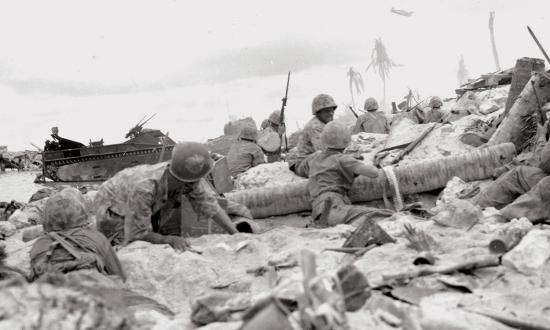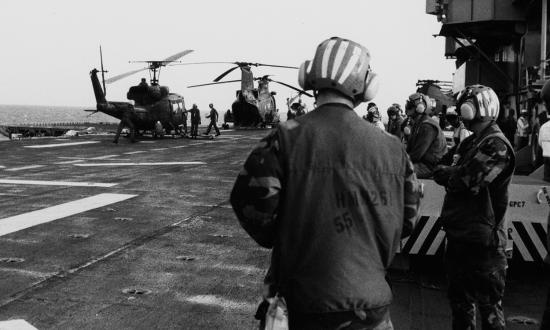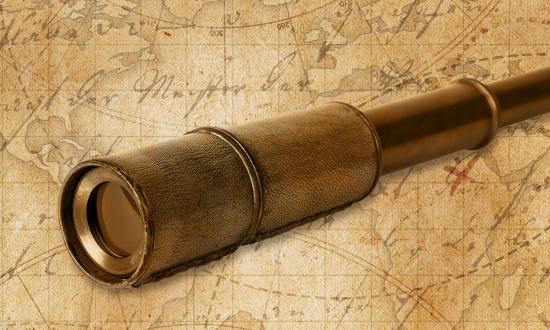The wild 1779 sea fight that burnished forever the legend of the indefatigable John Paul Jones was “one of the most remarkable and bitterly contested battles in naval history,” observed military historian Trevor Nevitt Dupuy. “The Battle of Flamborough Head is the only recorded naval action won by a sinking ship, with the victorious crew sailing away in the defeated vessel.” Refusing to surrender, continuing to engage with ferocity even when your burning, shot-riddled ship is sinking out from under you—if that doesn’t epitomize the ultimate fighting spirit, then what does?
Jones earned his lasting place atop the pantheon of American naval heroes in that slugfest between his Bonhomme Richard and HMS Serapis off the Yorkshire coast. It is not only his most famous exploit but also the seminal battle-memory in the American naval saga—this dogged and tenacious victory that imparted enduring character and luster to a nascent navy, a luster that continues to imbue it in its modern incarnation.
Such a celebrated sea story has been so often recounted that you’d think there’d be nothing more to add to it. But thankfully, that is no longer the case: British archaeologist Trevor Brigham recently unearthed a pair of long-forgotten firsthand accounts of the Battle of Flamborough Head. We now have two exciting additional eyewitness narratives to one of naval history’s most iconic engagements, and we are pleased to share them with you in this issue.
One of the accounts appeared shortly after the battle in a small-town English newspaper then never saw the light of print again—until now. The other was published obscurely in the early 19th century and likewise forgotten thereafter. Both were lost to the historical record; as Brigham notes, “Neither of these accounts has been quoted or referenced in any previous work” on the Battle of Flamborough Head. Here, then, is proof yet again that the work of history is never finished. And future retellings of Jones’ famous battle will have some fresh primary-source material to include!
Next up, we present the First Prize winner in the 2023 CNO Naval History Essay Contest. Andrew Blackley offers a cautionary survey of the “legacy bases” from World War II that are scattered across the Pacific—vestiges of the Allied advance toward Japan, the military bases and airfields that became the stepping stones for the Allies as they island-hopped their way to eventual victory. But as Admiral Chester W. Nimitz himself presciently noted at the time, these remnant bases arrayed across the vast Pacific expanse could pose a potential security threat in some future Pacific warfighting scenario. Food for sobering thought, indeed, in light of currently strained Indo-Pacific geopolitics.
Also in this issue, Nicholas Sarantakes of the Naval War College presents a paean to the unsung contributions of the Royal Navy in the final assault on the Japanese Home Islands in 1945. Rick Barram looks at the “contraband” factor in the evolving role of African American sailors in the U.S. Navy in the Civil War. Robert L. Willett chronicles the infamous Halifax Harbor explosion of 1917. And Norman Polmar details the Navy’s earliest forays into the world of nuclear propulsion in the 1940s—a pioneering effort that would culminate in world’s first nuclear submarine, the USS Nautilus (SSN-571), in 1954. Herein, then, we run the gamut from John Paul Jones storming across the deck of the Bonhomme Richard to the birth of the nuclear Navy. Enjoy!
Eric Mills
Editor-in-Chief







